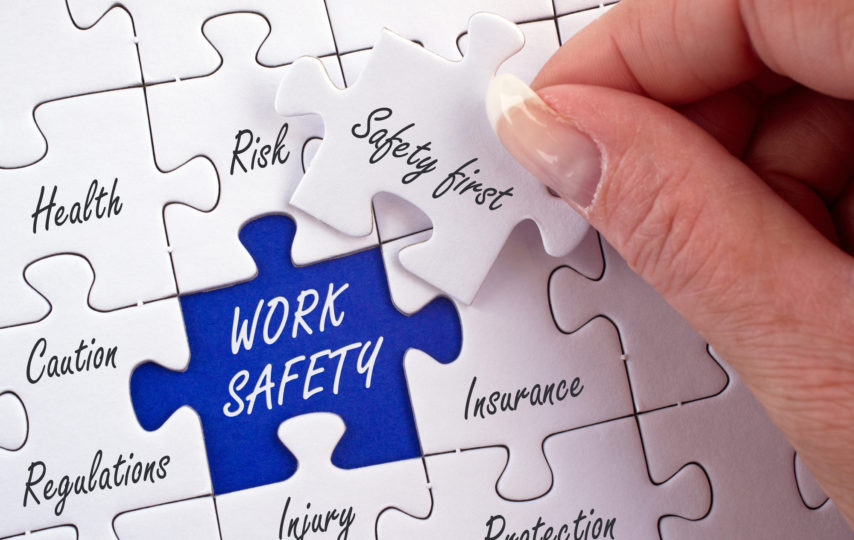About 2.8 out of every 100 workers gets injured on the job every year. The state requires employers to pay their employees for any workplace injury sustained regardless of the cause. That means if you have 200 employees, you’ll have to pay 6 employees for their workplace injuries yearly.
That’s a lot of money down the drain, yet avoiding workplace injuries is as simple as adopting concrete risk management policies. Smart companies embrace ohs consulting melbourne to assist with risk assessment. In doing so, they engender a safe and conducive working environment for their employees and reduce workplace injuries and illnesses.
ISO 45001, published in March 2018, is an international standard that gives specifics on what an Occupational Health and Safety Management System should entail. That way, organizations can proactively take steps to prevent workplace injuries and illnesses. It has also formed an integral role in the formation of risk management policies for organizations worldwide.
Here, we’ll be looking at what OHS management is and why it’s so essential for risk assessment and management.
What Is Risk Assessment?
Risk assessment is a facet of organization management that ensures the health and safety of workers. It deals with identifying hazards and other factors that have the potential to harm your employees. Risk assessment is a multi-faceted process that involves:
- Pinpointing hazards that could injure or make your employees sick
- Evaluating the risk associated with the hazard in question
- Coming up with appropriate and cost-effective ways of eliminating the hazards
Comprehensive risk assessment doesn’t look at physical objects as the only potential hazards. It also looks at processes and situations that may harm employees and clients. The process culminates in the implementation of policies and alterations to minimize risk in the workplace.
Important Terms in Risk Assessment
You need to be well versed with risk assessment terminologies to conduct the exercise appropriately. Here are some common terms you might encounter
Hazard identification– The process of identifying, highlighting, and noting down the characteristics of hazards.
Risk evaluation– The determination of risk criteria based on the risk’s significance.
Risk control– Steps you take to mitigate the risk or eliminate it.
Why Is OHS Management Important for Risk Assessment?
ISO 45001 is the benchmark standard for OHS management that cuts across all companies and organizations regardless of the sector. It’s an excellent replacement for country-specific standards that were the norm a few years ago. OHS management has been a crucial factor for risk assessment for the following reasons.
Compliance
Compliance is at the core of any risk assessment process. That’s because regulations and legal requirements form the basis of risk assessment and control. Governing bodies arrive at these regulations after comprehensive research on what poses the greatest risk to the health and safety of employees.
OHS management allows you to comply with the stipulated laws and regulations to ensure a safe working environment. After achieving full compliance, you can move to identify potential hazards that are unique to your premises or industry niche.
Compliance also comes with its own set of benefits which include:
- Reduced insurance premiums
- Increased motivation and better staff relations
- Better health and safety for employees
- A boost in social and corporate responsibility
Apart from improving your risk assessment, OHS management also benefits your business in the ways shown above. It’s a win-win for both you and your employees.
Easier Access to Funding
The equipment and personnel needed to conduct proper risk assessment don’t come cheap. You might need external funding to afford the equipment and hire skilled experts that can handle elaborate WHS management system software. Investors are more willing to fund companies with an OHS management system than one without.
OHS management shows that your company is well-organized and committed to ensuring the safety of its workers. Banks and investors don’t hesitate to finance companies that are well managed and show proper organization.
If you want easier access to funds for your risk management and other company activities, start by adopting proper OHS management practices.
Improves Awareness
A crucial part of OHS management includes increasing awareness among staff and other company officials. That’s because an OHS management system encourages a culture of resilience and improved organizational performance. With such a system, workers and officials are predisposed to keeping an eye out for various hazards and reporting them to assist in the risk assessment process.
Elements of an OHS management system that encourages better awareness include:
- Consultation and communication
- Planning
- Safety training and orientation
The above are crucial in engendering a culture of vigilance and awareness of potential hazards. The combined effect is an easier and more comprehensive risk assessment process for the company’s greater good.
Gives a Methodology for Risk Identification
As mentioned earlier, there are tons of risk assessment methodologies companies can adopt. However, some of them are too convoluted for the average employee. The average worker has no clue how to go about effect analysis or use a risk matrix.
However, the OHS management system gives simple ways for risk identification and management. It also helps identify company members who are most at risk and prioritize control measures to avert risks.
This is especially useful at the planning and design stage to prevent injuries and illnesses. It also minimizes spending on alteration of building structures and the like in the future.
Embrace OHS Management for Seamless Risk Management
Embracing OHS management is vital for streamlining your risk assessment and risk management regardless of your niche. That’s why you need to make sure you’re well on track with the appropriate OHS management practices for seamless risk management. You can consider hiring an expert if you need help with your OHS management implementation or risk assessment.
To read more informative articles, keep visiting our website.













